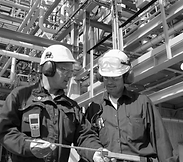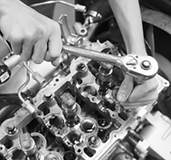Engineering and Technology Quarterly Reviews
ISSN 2622-9374




Published: 29 September 2023
The Effect of Copper Mineral, Copper Sulfate and Copper Nanoparticles on Fish
Mohammad Hakim Hormat, Hasan Karimy
Bamyan University

Download Full-Text Pdf
10.5281/zenodo.8386146
Pages: 26-32
Keywords: Aquatic Animals, Copper, Compounds, Growth, Nanoparticles, Sulfate
Abstract
Copper is a mineral element that is widely found in nature and is very important for humans and aquatic animals as an essential element for the growth and development of fish and also in the activity of biochemical enzymes and in processes such as blood production, immune system, The production of energy molecules and salt water balance plays an important role in the fish body. Its deficiency in water can lead to growth and health problems in fish. Its compounds, such as copper sulfate and copper nanoparticles, can have various effects on fish. Copper sulfate is usually used as a source of copper in fish feed. Its consumption in nutrition can improve the growth of fish, strengthen the structure of bones and maintain their immune system. However, too much copper sulfate can be toxic and cause problems such as skin irritation, discoloration, scratched gills and even fish death.
References
Aprodu, I., Vasile, A., Gurau, G., Ionescu, A., Paltenea, E. (2012). Evaluation of nutritional quality of the common carp (Cyprinus carpio) enriched in fatty acids. The Annals of the University of Dunarea de Jos of Galati. Fascicle VI. Food Technology 36, 61.
Caruso, G., G Denaro, M., Genovese, L. (2009). Digestive enzymes in some Teleost species of interest for Mediterranean aquaculture. The Open Fish Science Journal 2.
Cuenco, M.L., Stickney, R.R., Grant, W.E. (1985). Fish bioenergetics and growth in aquaculture ponds: II. Effects of interactions among, size, temperature, dissolved oxygen, unionized ammonia and food on growth of individual fish. Ecological modelling 27, 191-206.
Davis, D.A., Gatlin III, D.M. (1996). Dietary mineral requirements of fish and marine crustaceans. Reviews in Fisheries Science 4, 75-99.
FAO. (2012). Fisheries and Aquaculture department, Abramis brama (Linnaeus, 1758).
FAO. (2016). The State of World Fisheries and Aquaculture: Contributing to food security and nutrition for all. FAO, Rome, Italy, 200 p.
Gheysari, H. (2013(. The necessity of determine the standard of heavy metals in aquatics edible in Iran. The third national conference on agriculture, fisheries and food. Bushehr. 19&20 December. (in Persian).
Gogoi, S.K., Gopinath, P., Paul, A., Ramesh, A., Ghosh, S.S., Chattopadhyay, A. (2006). Green fluorescent protein-expressing escherichia c oli as a model system for investigating the antimicrobial activities of silver nanoparticles. Langmuir 22, 9322-9328.
Hajipour, M.J., Fromm, K.M., Ashkarran, A.A., de Aberasturi, D.J., de Larramendi, I.R., Rojo, T., Serpooshan, V., Parak, W.J., Mahmoudi, M. (2012). Antibacterial properties of nanoparticles. Trends in biotechnology 30, 499-511.
Havens, K.E. (1994). An experimental comparison of the effects of two chemical Stressors on a freshwater zooplankton assemblage. Environmental Pollution 84, 245-25.
Igbasan, F., Akinsanmi, S. (2012). Growth response and carcass quality of broiler chickens fed on diets supplemented with dietary copper sources. African Journal of Agricultural Research 7, 1674-1681.
Jobling, M. (2012). National Research Council (NRC): Nutrient requirements of fish and shrimp. Springer.
Kamunde, C., Grosell, M., Higgs, D., Wood, C.M. (2002). Copper metabolism in actively growing rainbow trout (Oncorhynchus mykiss): interactions between dietary and waterborne copper uptake. Journal of Experimental Biology 205, 279-290.
Kaushik, S.J., Seiliez, I. (2010). Protein and amino acid nutrition and metabolism in fish: current knowledge and future needs. Aquaculture Research 41, 322-332.
Kim, J.S., Kuk, E., Yu, K.N., Kim, J.-H., Park, S.J., Lee, H.J., Kim, S.H., Park, Y.K., Park, Y.H., Hwang, C.-Y. (2007). Antimicrobial effects of silver nanoparticles. Nanomedicine: Nanotechnology, Biology and Medicine 3, 95-101.
Lall, S., Milley, J. (2008). Trace mineral requirements of fish and crustaceans. Trace elements in animal production systems, 203-214.
Lei R, Wu C, Yang B, Ma H, Shi C, Wang Q, et al. Integrated metabolomic analysis of the nano-sized copper particle-induced hepatotoxicity and nephrotoxicity in rats: a rapid in vivo screening method for nanotoxicity. Toxicol Appl Pharmacol 2008; 232(2): 292-301.
Liu, G.L., Kim, J., Lu, Y., Lee, L.P. (2006). Optofluidic control using photothermal nanoparticles. Nature materials 5, 27.
Lundebye, A.-K., Berntssen, M., Bonga, S.W., Maage, A. (1999). Biochemical and physiological responses in Atlantic salmon (Salmo salar) following dietary exposure to copper and cadmium. Marine Pollution Bulletin 39, 137-144.
Mazandarani, M., Sudagar, M., Somayeh Namroodi. (2015). Histopathological effects of acute copper sulphate exposure on kidney, liver and gill of common carp, Cyprinus carpio, fingerlings. Journal of Aquatic Ecology 5(1), 9- 16.
Morones, J.R., Elechiguerra, J.L., Camacho, A., Holt, K., Kouri, J.B., Ramírez, J.T., Yacaman, M.J. (2005). The bactericidal effect of silver nanoparticles. Nanotechnology 16, 2346.
Nasopoulou, C., Smith, T., Detopoulou, M., Tsikrika, C., Papaharisis, L., Barkas, D., Zabetakis, I. (2014). Structural elucidation of olive pomace fed sea bass (Dicentrarchus labrax) polar lipids with cardioprotective activities. Food chemistry 145, 1097-1105.
Prabhu, P.A.J., Geurden, I., Fontagné-Dicharry, S., Veron, V., Larroquet, L., Mariojouls, C., Schrama, J.W., Kaushik, S.J. (2016). Responses in micro-mineral metabolism in rainbow trout to change in dietary ingredient composition and inclusion of a micro-mineral premix. PloS one 11, 0149378.
Prabhu, P.A.J., Schrama, J., Mariojouls, C., Godin, S., Fontagne-Dicharry, S., Geurden, I., Surget, A., Bouyssiere, B., Kaushik, S. (2014). Post-prandial changes in plasma mineral levels in rainbow trout fed a complete plant ingredient based diet and the effect of supplemental di-calcium phosphate. Aquaculture 430, 34-43.
Rainbow, P.S., Furness, R.W. (1990). Heavy metals in the marine environment. CRC PRESS, BOCA RATON, FL(USA). 1-3.
Silva, S.d., Anderson, T., Sargent, J. (1995). Fish nutrition in aquaculture. Reviews in Fish Biology and Fisheries 5, 472-473.
Stickney, H.L., Barresi, M.J., Devoto, S.H. (2000). Somite development in zebrafish. Developmental dynamics: an official publication of the American Association of Anatomists 219, 287-303.
Taylor, D.S., Turner, B.J., Davis, W.P., Chapman, B.B. (2007). A novel terrestrial fish habitat inside emergent logs. The American Naturalist 171, 263-266.
Wu, Y., Zhou, Q., Li, H., Liu, W., Wang, T., Jiang, G. (2010). Effects of silver nanoparticles on the development and histopathology biomarkers of Japanese medaka (Oryzias latipes) using the partial-life test. Aquatic Toxicology 100, 160-167.
Zhang, J., Wang, X., Xu, T. (2007). Elemental selenium at nano size (Nano-Se) as a potential chemopreventive agent with reduced risk of selenium toxicity: comparison with se-methylselenocysteine in mice. Toxicological sciences 101, 22-31.



